When I think back on all the trips I have done so far, my road trip from Cape Town to Windhoek will definitely go down as one of my all time favourites. The scenery and adventure in Namibia is ever-changing, diverse and truly exciting.
Planning a big road trip like this one can be a little tricky, especially if you plan to do it in peak season. So, this beast of a post if going to include everything you need to plan an epic road trip through Namibia. Featuring a whole bunch of things you need to know about Namibia travel, accommodation options, what to budget and two incredible itineraries to help you make the most of your time, this post will guide you through one of the most stunning countries in Southern Africa.
This post contains affiliate links. Making a booking through these links will not incur any extra costs for you, but I will earn a small commission which goes towards the costs of keeping this blog running.
Your support is appreciated!
Okay, so what do you need to know before embarking on a Namibian adventure?
Sim Cards
Namibian sim cards can be purchased cheaply at most petrol stations. We purchased ours for $1 AUD and didn’t end up activating it as we didn’t need to, but it gave me a big sense of security to know that we could do so at any time. Namibia is an enormous and sparsely populated country, if you are to break down in the middle of nowhere you could find yourself in a spot of trouble. Having a local sim card gives you some extra insurance and is well worth having.
Currency
The offical currency of Namibia is the Namibian dollar, but South African rand are accepted everywhere. There is a permanent exchange rate in place for these currencies (1 NAD = 1 ZAR) and they can thus be used interchangeably. However, it is worth noting that Namibian Dollars are not widely accepted in South Africa, so it is a good idea to spend all of your Namibian cash before using your South African notes.
Camping
There are campsites all over Namibia, and camping is a very safe way to see the country. Wild camping is permitted in much of the country, but is notably illegal when in the Sossusvlei region. Serviced campsites are cheap and set up with water, bathrooms and electricity – making them a better option than wild camping.
Booking
When it comes to booking and planning in advance, it is worth noting that this drastically changes between seasons. In low season (October to April) you could definitely afford to have more of a ‘winging it’ approach to travel, but during the high season (May to September) booking in advance isn’t just advisable, it is usually very necessary – especially in regards to vehicle hire and accommodation in the Sossusvlei region.
I started booking our September trip in Feb/March and most vehicle companies were already reporting having no available vehicles during this month – Sossusvlei accommodation was also very hard to come by.
Electricity
Namibia uses a mix of type D and M plugs – the same as those used in South Africa. International sockets are a rarity, so adapters will be necessary.
Car Hire
Firstly, if you visit in peak season, book a vehicle at least 6 months in advance. Secondly, while most of Namibia could technically be explored using a 2wd, such a trip will be much slower, much less comfortable and will limit where you can actually get to.
We rented a 4×4 Toyota Hilux through the company South Africa 4×4 and I’d absolutely recommend them. The car came with (almost) everything we could possibly need for a camping adventure, including cooking equipment, a rooftop tent, mattresses, sleeping bags, pillows, an extended fuel tank, torches, a fridge and all the regular car related stuff that you’d expect. All you need to bring is yourself, food and some cheeky Savannah’s for the end of each day!
Renting a vehicle of this type costs as much as $155 AUD per day in peak season and as little as $115 per day in the absolute low season (January to March) but for me, paying the extra $40 per day to avoid contending with the blistering heat of a Namibian summer was well worth the splurge.
Wildlife
Driving through the middle of nowhere might sound like an unlikely place to spot wildlife, but that really isn’t the case. We spotted so much while driving! Ostriches, baboons, so many different times of wild game and Dan even swears that he spotted a giraffe!
In regards to this wildlife, a little commonsense goes a long way. Drive attentively and with care, keep your food secured, always look before you get out of your tent and if there are baboons around while your car is stationary, make sure to lock the doors! Those cheeky monkeys are clever and cunning, and will do just about anything to get into your snacks.
Safety
Namibia is one of the safest countries for travellers in all of Africa, and really, that’s kind of all I need to say!
We camped, drove, hiked and explored without any issues – and from what I have heard from other travellers – this is the norm. I felt overwhelmingly safe in Namibia, and I have literally never heard of a traveller saying anything to the contrary.
Food
We cooked the vast majority of our own meals whilst on the road, with the occasional treat meal at a hotel or lodge restaurant. Groceries are cheap, but it is worth noting that they are markedly cheaper in South Africa. It makes sense to stock up on supplies before crossing the border.
Weather
Our Namibia adventure took place in September, which is the first month in spring. This period brought us pretty much perfect weather, so despite the busyness, I’d certainly recommend it as a good month to visit. However, it is worth noting that Namibia is an enormous country and that the mercury certainly did shift enormously between places.
When we left Cape Town it had been cold enough that there was snow on the top of Table Mountain! In Orange River and Fish River Canyon the sun was always shining, but it was chilly enough to warrant wearing a light sweater during the day and a thick jacket at night. In Lüderitz, Kolmanskop and Sossusvlei, the temperatures were quite a lot higher (think 28-32°C) and stayed quite warm at night. Swakopmund and the Skeleton Coast were then significantly cooler – we even got a little rain!
Border Crossing
We crossed from South Africa into Namibia at Vioolsdrift Border Control Station. This border post is open 24 hours and involves several different stations.
Firstly, we handed over our passports and were stamped out of South Africa.
Next, we had to drive our car a little further and have the vehicle approved to cross the border. It was at this point that they checked all of our documents over. You will need to show your valid drivers license, proof of vehicle ownership by the rental car company, police clearance certificate and written permission from the owner for the vehicle to be taken across the border. The rental car company will give you all of these documents when you pick up the car, but be sure to go through and make sure that none of these key documents are missing before you head off on your adventure!
Next, we drove out of South Africa, handed over our passports once more and were officially stamped into Namibia.
Lastly, we needed to pay the road user’s fee in the next office, which ended up being around $220 NAD, or approximately $21.50 AUD.
The whole process took around an hour but was fairly straightforward and stress free.
Trip Itinerary #1: The Ultimate No-Safari Namibian Adventure
If you aren’t interested in going on safari, if you are short on time or if you have slightly less moolah to burn, then this first itinerary would likely be the most suitable.
Day One: Cape Town to Orange River
Pick up your vehicle as early in the morning as possible and if so, try to do all your grocery shopping the evening beforehand so that you are ready to get on the road as early as possible. It is also worth noting that the process of obtaining your vehicle can take around an hour, especially if you are unfamiliar with all the equipment that you may need. SA 4×4 delivered the vehicle straight to our hostel in Cape Town and the handover procedure was informative and simple.
From our backpackers we then proceeded to drive the 694km to Amanzi Trails River Camp in Orange River, which is located just past the Namibian border. I chose this camp because of its close proximity to Vioolsdrift Border Control, which was a good choice. We arrived at the camp just as the sun went down, which was ideal. I didn’t fancy us driving around searching for a campsite in the dark!
This huge stretch of driving took around seven hours and although it wasn’t the most interesting or scenic drive, it gave us a good opportunity to get used to our new car and it gave me a particularly good opportunity to play DJ for the day.
Recommended Cape Town Accommodation:
Green Elephant Backpackers
The Green Ele is my favourite backpackers in Cape Town. It is located in the super trendy university suburb of Observatory (or ‘Obs’ as the locals call it), is super close to the Neighbourgoods Markets, has fast internet, lovely rooms and incredibly helpful staff.
A dorm bed starts at $21 AUD per night, including a fairly basic breakfast.
To learn more or to book, click here.
Recommended Orange River Accommodation:
Amanzi Trails River Camp
These campsites were some of the most well serviced that we came across in all of Namibia, not to mention, the views from our site in the morning were absolutely stunning.
Camping rates are $150 NAD per person, which is approximately $15 AUD.
To learn more or to book, click here.
Day Two: Orange River to Fish River Canyon
Fish River Canyon is the largest canyon in Africa and the second largest canyon in the world. The ravine of this incredible canyon is around 160km long and as much as 27km wide. Hiking this canyon properly takes a good number of days, which meant that I very nearly wrote off going at all! However, even if you don’t have time to hike down into the ravine, you can still certainly appreciate the majesty of this wondrous location.
We woke up with the sun this next morning in order to get to Fish River as soon as we could. We had splurged on a night at the (unbelievably special) Fish River Lodge and wanted to get there as soon as check in opened to make the most of our one night there.
This 315km drive should have taken around 4.5 hours, but it took us well over five hours – purely because the landscapes were so stunning that I kept wanting to stop for photos! We chose the route which followed the Orange River through Ai-Ais Richtersveld Transfrontier Park, which was certainly a good decision, though probably not the best route to head North through if you are only in a 2×2.
This day of driving was by far one of the prettiest, most exciting and most diverse driving days of the entire adventure.
We arrived at Fish River Lodge and it was every bit as amazing as I had hoped. We spent the night in a chalet that sat on the edge of the second largest canyon in the world, drank cider, ate amazing food and saw one of the most beautiful sunsets of my entire life.
Recommended Fish River Canyon Accommodation:
Fish River Lodge
This lodge will go down as one of the coolest places I have ever stayed. Ever. Offering 5* views for 4* prices, staying on the rim of a canyon is an undeniably unique way to spend the night. Oh, and there is even a canyon hugging infinity pool to cool down in!
$392 AUD for a night might sound steep, but this also includes breakfast and a three course dinner. When we visited this also included a complimentary sunset drive around the rim of the canyon, complete with Savannah’s and a delicious sundowners food platter.
To learn more or to book, click here.
Important note: If you do end up wanting to stay at Fish River Lodge (and why wouldn’t you? #notsponsored) the track to get there is 4×4 only – no 2wd would make it.
Day Three: Fish River Canyon to Lüderitz
This day involves a 342km drive which will take around four hours to complete. We stayed on at Fish River Lodge for as long as we could (when you splurge on a room, you wanna make the most of it) and ended up getting back on the road at around 11.30am. We arrived into Lüderitz mid-afternoon and were pretty exhausted. After checking into our hostel the only thing we really had the energy to do was go and get groceries before settling into bed for an early night.
Recommended Lüderitz Accommodation:
Element Riders Backpackers
This is a safe and comfortable backpackers which has plenty of room for onsite parking, plus they have two adorable doggos! A dorm bed starts at $125 NAD ($12.50 AUD) per night, but a private room will only set you back $30 AUD per night, so if you are travelling in a couple, this may be a better option.
They don’t advertise it on their website, but while we were there they did allow a couple to camp in their parking area and use the shared bathroom and kitchen facilities, so if you are on a serious business budget, it might be worth shooting them an email and asking if this is still an option.
To learn more or to book, click here.
Day Four: Explore Kolmanskop and Lüderitz
The town of Lüderitz is quite a sleepy little seaside town, but it has the advantage of being located just 12km from Kolmanskop, which was one of the places I wanted to visit most in Namibia.
Kolmanskop was once a prosperous German-owned mining town thanks to the discovery of diamonds in the early 1900’s, but after WWII the number of diamonds discovered started to dwindle. When large diamond deposits were discovered in Orange River the inhabitants of this town began to pack up and go in search of a new place to find their wealth.
By 1956 Kolmanskop had been completely deserted and over the years, nature has taken over and the town is slowly but surely being swallowed by the sands of the Namib desert.
Kolmanskop is open daily but operating hours are limited on Sundays. Tours are available in English and German, but you can also just explore independently. The entrance fee is a mere $75 NAD ($7.50 AUD) and this can be paid at the gate. The heat in this region is quite oppressive, so it is advisable to visit the town as early in the morning as you can manage.
Later in the day, you can explore a little of Lüderitz town. Notable things to see and do include watching the sunset at Diaz Point, exploring the colonial architecture and getting a glimpse of the Rock Church.
Day Five: Lüderitz to Sesriem
The most famous attraction in all of Namibia is undoubtedly the sand dunes of Sossusvlei. These sand dunes are famous for being some of the highest in the world, and arguably, some of the most visually stunning.
This popularity is well deserved, but does mean that your day spent at these dunes will likely be the least relaxed of your trip. We had spent the first four days of our adventure barely seeing any other travellers but in Sossusvlei, droves of visitors seemed to appear out of nowhere!
The drive from Lüderitz to Sesriem covers a whopping 464km and will take you at least six hours, if not longer. This may seem like an unpleasantly long day of driving, but the landscapes are constantly changing along this route, and the drive seemed to pass much quicker than we had expected.
Recommended Sesriem Accommodations:
It is worth noting that accommodation in the Sossusvlei region books up very far in advance, so I am listing a handful of different accommodation options as your first choice may be booked out.
Namib Desert Lodge and Namib Desert Camp
From a purely location perspective, Namib Desert Lodge certainly wouldn’t have been my first choice of accommodations. It is located in Solitaire, a good distance away from Sossusvlei. However, I went to book accommodation six months in advance and it was one of the very few places I could find that still had availability and reasonable pricing.
We actually ended up loving our time at this lodge. We spent one night in the campsite and one night in the lodge itself, and both were fantastic experiences. There are a couple of great marked hiking trails on the property and there is an extensive bar and fantastic pool to relax by.
A standard room will set you back $264 for a night including breakfast and details for booking a room can be found by clicking here.
A campsite costs a mere $19.50 per night, but it is worth noting that these sites are really only suitable for rooftop tents due to the rocky ground and high volume of wildlife that roam in the area. Details for booking a camping site can be found by clicking here.
Sesriem Campsite
Sesriem Campsite is one of the most popular accommodation options in Sesriem, and if you manage to get a booking here, you are certainly one of the lucky ones! A campsite will set you back a mere $35 AUD per night and the camp is located within the gates of Sesriem, which means that you’ll be able to gain access to the dunes earlier in the morning and later in the evening.
It just isn’t possible to witness sunrise over Sossusvlei unless you have accommodation within these gates, so it really does pay to book your accommodation as far in advance as possible to better your chances of snagging one of these campsites.
For more information about Sesriem Campsite, click here.
Desert Camp
This camp is located 5km away from the Sesriem gates and is ideal for people who want to get to the dunes early but also want the creature comforts that come with having a private chalet.
At $145 AUD per night, these chalets are very reasonably priced, especially when you consider the stunning pool and braai facilities that a stay here gives you access to.
To learn more about Desert Camp or to book, click here.
Day Six: Sossusvlei
You can find a detailed blog about everything you need to know (there is more to it than you’d think) before visiting Sossusvlei by clicking the hyperlinked title above.
The entrance fees for Sossusvlei are $80 Namibian Dollars per person and $10 per vehicle – which totalled around $17 AUD for two people with a car.
I do want to stress that it gets hot and sunny very quickly in this area, so make sure you bring plenty of water and slap on as much high factor sunscreen as is feasibly possible.
Optional: You could start driving to Swakopmund straight after seeing the dunes if you don’t plan to see them by sunset.
Day Seven: Sossusvlei to Swakopmund
Today will be another big day of driving. The drive from Sesriem to Swakopmund is 348km and will take you a minimum of 4.5 hours, but probably more like 5 hours.
If you are full of beans when you arrive in Swakopmund then you could certainly do some exploring, but if you are anything like us you’ll be so exhausted that all you want to do is stuff your face with carbs, watch a horror film on Netflix and get an early night.
Recommended Swakopmund Accommodation:
Skeleton Beach Backpackers
This is a safe and comfortable backpackers with surprisingly good self catering facilities. A private room starts at $50 for a night, though dorm accommodation is much cheaper if you are looking so save some cash.
For more information and to book, click here.
Day Eight: Cape Cross and the Skeleton Coast
The Skeleton Coast is famous for being home to the skeletons of many (seriously so many) shipwrecks, however for me, the main appeal was certainly the inhabitants of Cape Cross.
This cape is home to the one of the largest colonies of Cape Fur Seals, and with 200,000 (at least) inhabitants, it is a sight that you certainly won’t want to miss – spending time with these ocean puppies was an undeniable highlight of my time in Namibia.
Cape Cross Reserve is open from 10am to 5pm daily and entrance costs $5 AUD per person.
Day Nine: Explore the Surrounds of Swakopmund by Quad Bike
One of the most fun things you can do in Swakopmund is a quad biking adventure through the surrounding desert. Daredevil Adventures offer many tours of varying durations, ranging from 1 hour introductory trips, right up to 5 hour long trips to the famous Dune 7.
A 60 minute quad adventure goes for $45 AUD and a 90 minute tour is slightly more expensive at $55.
For more details and to obtain a full price list, click here.
Optional: Start driving to Windhoek in the early afternoon if you have an early morning flight the next day.
Day Ten: Swakopmund to Windhoek
The drive from Swakopmund to the capital of Windhoek is 366km and will take you about 3.5 hours. This isn’t the most exciting of drives, so take the time to reminisce over the amazing adventure that you’ve just had before departing the country either on this day or the next morning.
Recommended Windhoek Accommodation:
African Kwela Guesthouse
This is a safe and comfortable guesthouse with semi-decent wifi. It is a comfortable spot to spend the night before flying out of Namibia the next day. Prices start at $90 per night for a private room.
For more information or to book, click here.
Trip #1 Budget
So how much moolah will this trip set you back?
This is a fairly accurate estimation of how much money going on this 10 day adventure will cost a couple or duo, although it is worth noting that all these quoted prices are subject to fluctuation and should be used as an approximation only.
Car rental
10 days x $155 AUD = $1,550
Administration Fee: $93
One Way Cape Town Fee: $495
Total Cost: $2,138
Accommodation
x1 night Green Elephant Backpackers: $21 x 2 persons = $42
x1 night Amanzi Trails Campsite: $15 x 2 persons = $30
x1 night Fish River Lodge: $393
x2 nights Element Riders Backpackers: $30 x 2 nights = $60
x2 nights Sesriem Campsite: $35 x 2 nights = $70
x3 nights Skeleton Beach Backpackers: $50 x 3 nights = $150
x1 night African Kwela Guesthouse: $90
Total Cost: $835
Fuel
I actually know exactly how much we spent on fuel in Namibia thanks to the Splitwise app, which Dan and I used during our trip to ensure that our spending was split equally.
Our entire fuel costs came to $5,766 NAD, which is equal to around $563 AUD. Considering the sheer amount of driving we did and also how much time we spent properly four wheel driving, I was actually pretty happy with this amount.
From memory, we clocked around 4000km onto our odometer during our trip, which means that for every $1 we spent on fuel we got over 7km of driving out of it.
Total Cost: $563
Food
Once again, thanks to Splitwise, I know exactly how much we spent on food in Namibia.
All of our groceries, coffee stops, afternoon ciders and petrol station snacks came to just $226 – not bad considering that we did this itinerary over a longer period of 14 days!
Based on that, we spent an average of $16 per day on food.
Total Cost: $160
Extras
Kolmanskop Entrance Fee: $15 for two persons
Sossusvlei Entrance Fee: $17 for two persons and one vehicle
Cape Cross Entrance Fee: $10 for two persons
90 Minute Quad Bike Adventure: $110 for two persons
Total Cost: $152
Final Trip Cost: $3,848 AUD ($1,924 per person)
Trip Itinerary #2: The Ultimate Namibian Adventure plus Etosha National Park
This itinerary is perfect for people who want a full two week adventure, for those with a bit of extra cash to splash or for those who are dying to go on an amazing safari in Etosha National Park.
Days 1 – 7: As Per Trip Itinerary #1
The first seven days of Trip #2 are the same as Trip #1, it is only when you arrive in Swakopmund that things start getting different!
Day 8: Explore the Surrounds of Swakopmund by Quad Bike
One of the most fun things you can do in Swakopmund is a quad biking adventure through the surrounding desert. Daredevil Adventures offer many tours of varying durations, ranging from 1 hour introductory trips, right up to 5 hour long trips to the famous Dune 7.
A 60 minute quad adventure goes for $45 AUD and a 90 minute tour is slightly more expensive at $55.
For more details and to obtain a full price list, click here.
Recommended Swakopmund Accommodation:
Skeleton Beach Backpackers
This is a safe and comfortable backpackers with surprisingly good self catering facilities. A private room starts at $50 for a night, though dorm accommodation is much cheaper if you are looking so save some cash.
For more information and to book, click here.
Day 9: Swakopmund to Etosha National Park via Cape Cross
Brace yourself, this is going to be your most intense day of driving for the entire trip, and you will need to get on the road as soon as the sun has risen.
The Skeleton Coast is an amazing part of Namibia, but much of it is inaccessible for vehicles and the only way to see it is through a fly-in safari, and you better believe that these don’t come cheap!
My advice? Drive as far as the Ugab River Gate and then turn around and head onwards to Etosha. You’ll cover an enormous 755km on this day and it will take at least 8.5 hours, not including stops at Cape Cross and various other sights, so it certainly isn’t a day for the faint hearted.
If you aren’t that fussed about seeing the spooky shipwrecks of the Skeleton Coast, only going as far north as Cape Cross before heading to Etosha will shave a good 1.5 hours and 140km off of your journey, so that may well be something to consider.
Recommended Etosha National Park Accommodation:
Etosha Safari Camp
Located just outside the gates of Etosha National Park, this safari camp is reasonably priced, highly rated and well suited for travellers who are looking for a self-driven safari experience.
Prices start at $121 AUD per person per night, including breakfast.
For more information or to book, click here.
Days 10 – 13: Etosha National Park
So why make the effort to visit Etosha?
Well, this well preserved national park has been extremely well set up for people who plan to self drive and is home to the largest free-roaming populations of cheetah and black rhino in the world. You’ll have the opportunity to see some of the most incredible wildlife that the African continent has to offer, including elephants, lions, leopards, giraffes, warthogs, hyenas and a truly phenomenal amount of wild game species.
Four full days in Etosha may sound like a lot, but all I’ve ever heard people say is how much they wished to stay longer, so if you love wildlife, these days will likely be a real highlight for you.
All lodges will provide meals, but these will come at a cost, so if you are trying to save money, stock up on foodstuffs and supplies in Swakopmund.
Entrance fees to the park are incredibly affordable. The daily fee per person is $80 NAD ($8 AUD) plus the daily vehicle fee of $10 NAD ($1 AUD) – making this one of the more affordable African safaris on the market.
Day 14: Etosha Safari Camp to Windhoek
Your final day of driving will involve a 410km final stretch back into the capital of Windhoek, taking around four hours. This isn’t the most exciting of drives, so take the time to reminisce over the amazing adventure that you’ve just had before departing the country either on this day or the next morning.
Recommended Windhoek Accommodation:
African Kwela Guesthouse
This is a safe and comfortable guesthouse with semi-decent wifi. It is a comfortable spot to spend the night before flying out of Namibia the next day. Prices start at $90 per night for a private room.
For more information or to book, click here.
Trip #2 Budget
So how much moolah will this trip set you back?
This is a fairly accurate estimation of how much money going on this 14 day adventure will cost a couple or duo, although it is worth noting that all these quoted prices are subject to fluctuation and should be used as an approximation only.
Car rental
14 days x $155 AUD = $2,170
Administration Fee: $93
One Way Cape Town Fee: $495
Total Cost: $2,758
Accommodation
x1 night Green Elephant Backpackers: $21 x 2 persons = $42
x1 night Amanzi Trails Campsite: $15 x 2 persons = $30
x1 night Fish River Lodge: $393
x2 nights Element Riders Backpackers: $30 x 2 nights = $60
x2 nights Sesriem Campsite: $35 x 2 nights = $70
x2 nights Skeleton Beach Backpackers: $50 x 2 nights = $100
x5 nights Etosha Safari Camp: $121 x 2 persons x 4 nights = $1,210
x1 night African Kwela Guesthouse: $90
Total Cost: $1,995
Fuel
We did not actually do the drive to Etosha, but due to some backtracking we ended up covering around the same amount of ground as we would’ve if we’d gone to Etosha (at least as per Google Maps) so I am going to estimate that the cost of fuel would be pretty similar.
Total Cost: $650
Food
Based on the calculations laid out in the Trip #1 Budget, we spent an average of $16 per day on food in Namibia for two persons.
Total Cost: $224
Extras
Kolmanskop Entrance Fee: $15 for two persons
Sossusvlei Entrance Fee: $17 for two persons and one vehicle
Cape Cross Entrance Fee: $10 for two persons
90 Minute Quad Bike Adventure: $110 for two persons
Daily Etosha Entrance Fee: $64 for two persons over four days
Daily Etosha Vehicle Fee: $4 for three days
Total Cost: $220
Final Trip Cost: $5,847 AUD ($2,923.50 per person)
Namibia Packing List
Let’s finish this beast of a guide with a quick list of everything you’ll need for the most epic Namibian adventure possible!
Clothes
Namibia is an enormous country, and as with any truly massive country, the weather is diverse and varied. You will need to pack for a variety of seasons. A warm jumper and thick weatherproof jacket are a must, especially if you intend to camp – it gets cold at night in the desert! I was lucky that I came from Iceland to Namibia, because it meant that I had my warm Iceland clothes, and honestly, I didn’t expect to need them in Namibia – but I was so glad that I had them!
Thick socks, thin t-shirts, comfy pants suitable for hiking in, sports bras and a couple of cuter outfits are also musts.
Laundry facilities are available in many lodges but if you are camping exclusively then you may want to bring enough undies and t-shirts for the entire trip.
Footwear
If you can only bring two pairs of shoes, bring a pair of sturdy hiking boots and something comfortable and light. I pretty much exclusively wore my Timberlands but also did clock a few miles in my Birkenstocks.
Sun Protection
Bring plenty of high factor sunscreen, decent sunnies and a hat. It may seem obvious, but the Namibian sun is a harsh mistress and she will burn the ever-loving crap out of you if given the chance!
Bug Protection
This is only really necessary for people planning to visit Etosha. If you aren’t going on safari, you honestly won’t need much in the way of bug spray.
Documents and Appropriate ATM Cards
It should go without saying, but make sure that you have all the appropriate documentation for your vehicle before accepting the keys! Also, it is worth noting that Dan’s Mastercard didn’t work at quite a lot of ATMs in Namibia – Visa is a safer card to carry.
Camera Gear
Bring everything you have, including extra batteries and memory cards; believe me, you’ll be needing them!
The Perfect Spotify Playlist
Any road trip through Namibia is going to involve some seriously long stretches of driving. Unless you can non stop talk for 3-8 hours each day, I’d highly recommend having some pre-prepared tunes for the long journey.
Final Note
Over the past six years I have ventured to over 60 countries across all seven continents, and out of all those many places, Namibia has easily become one of my absolute favourites.
This country seems to get frequently overlooked in favour of East African nations and while it deserves so much more recognition, the fact that it is flying under the tourism radar means that it is still a barely touched gem of a destination.
Finally, these estimated trip costs may seem high, but when you compare them to the costs of group tours, the cost is actually pretty comparable. Plus, having seen the enormous tour buses (from when we would overtake them and leave them in our dust, literally) I can honestly say that I’d never want to be on one.
Doing it independently gave us so much freedom, solitude, romance and adventure – I wouldn’t recommend doing it any other way.

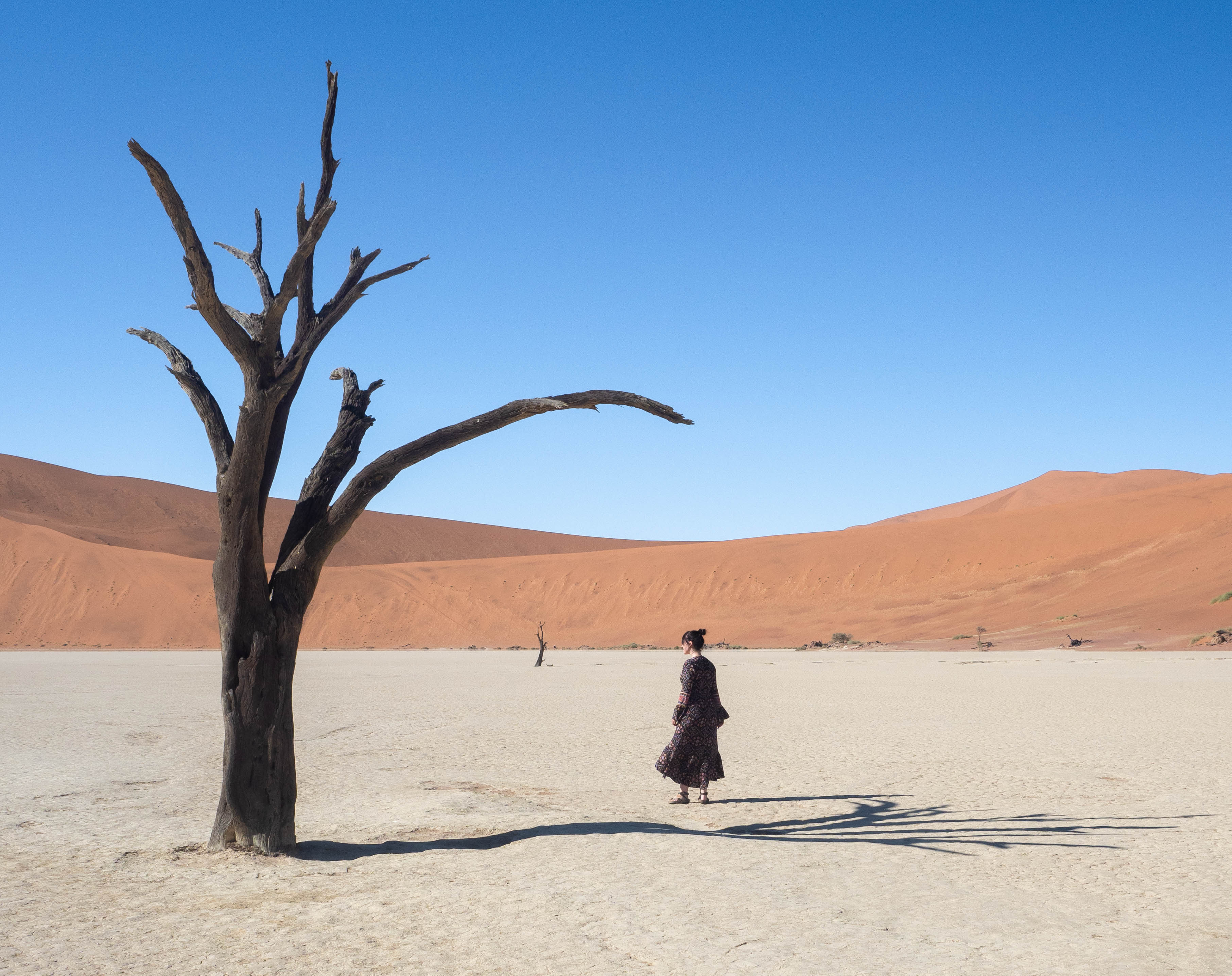

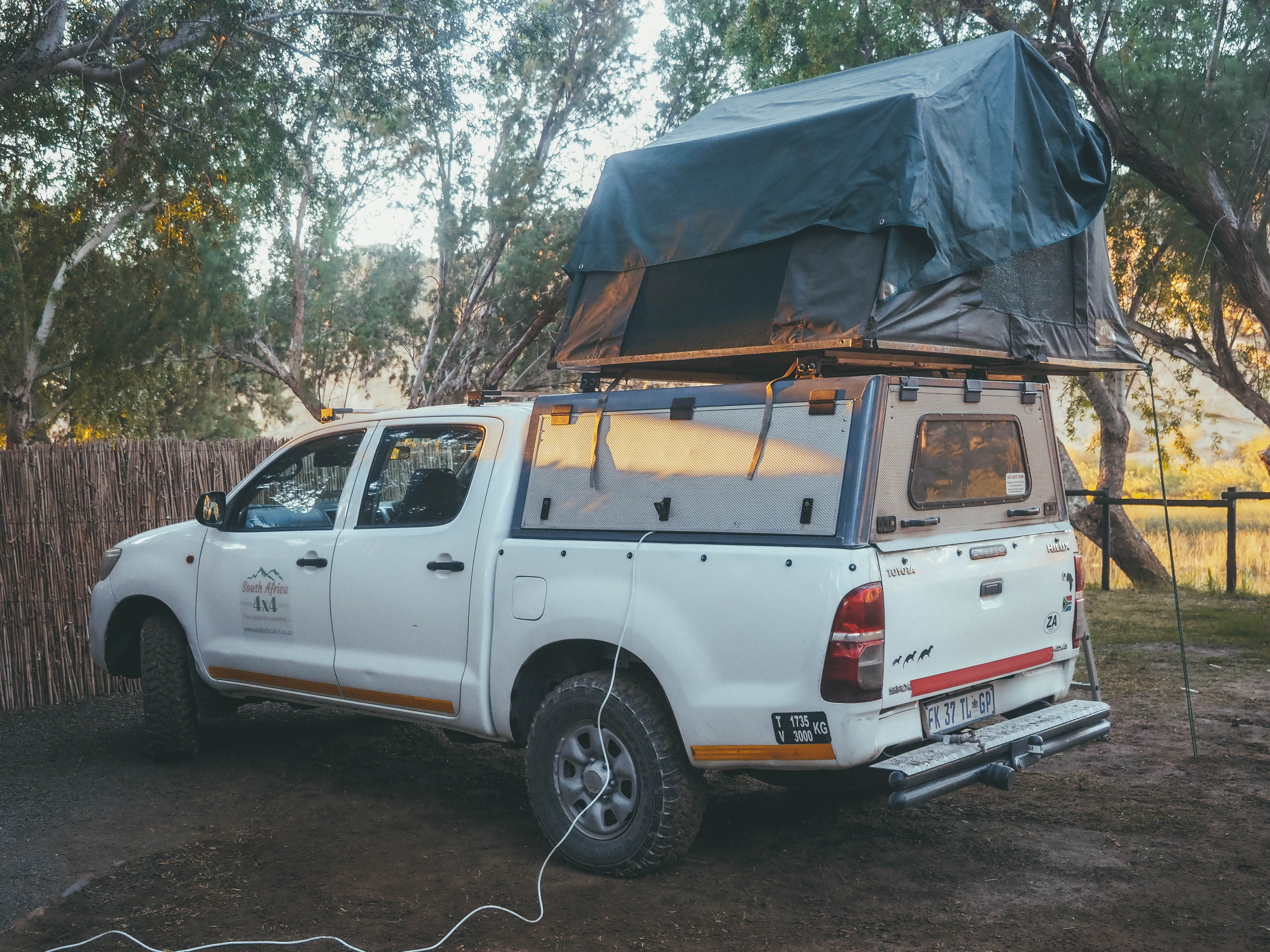
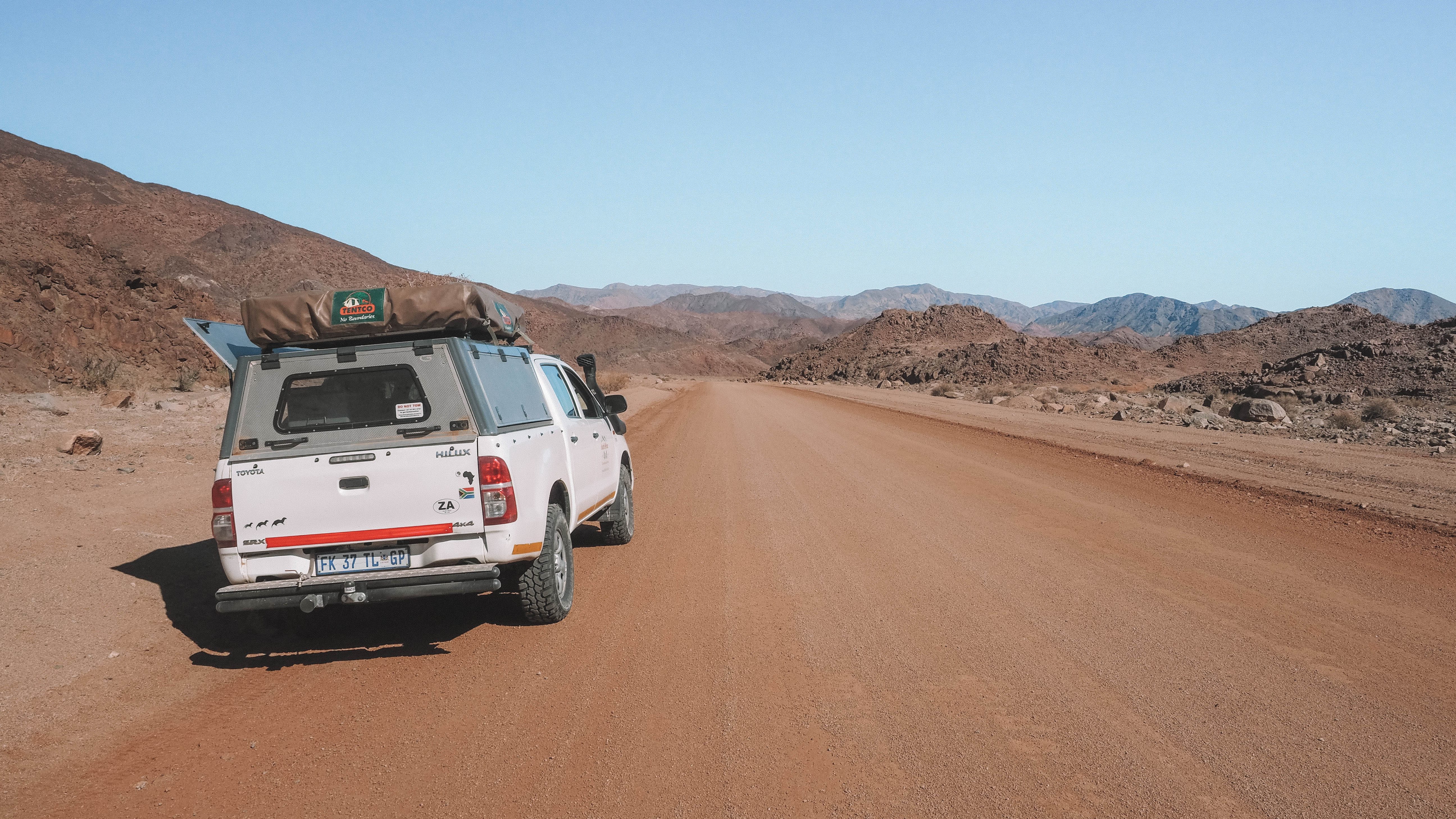
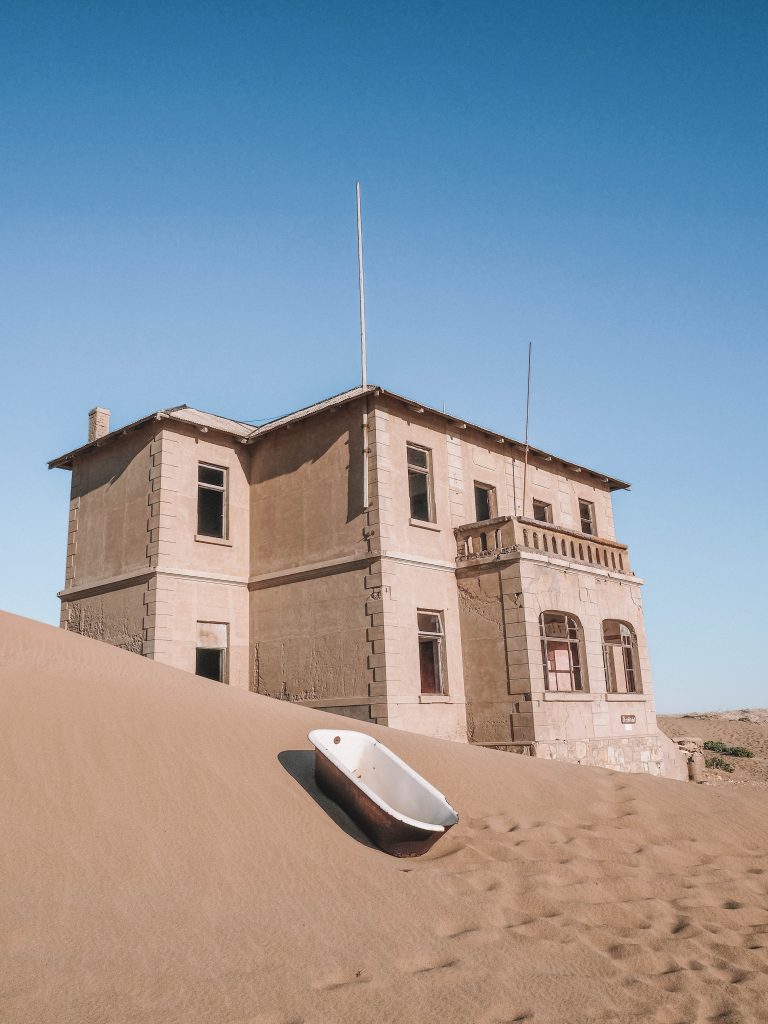

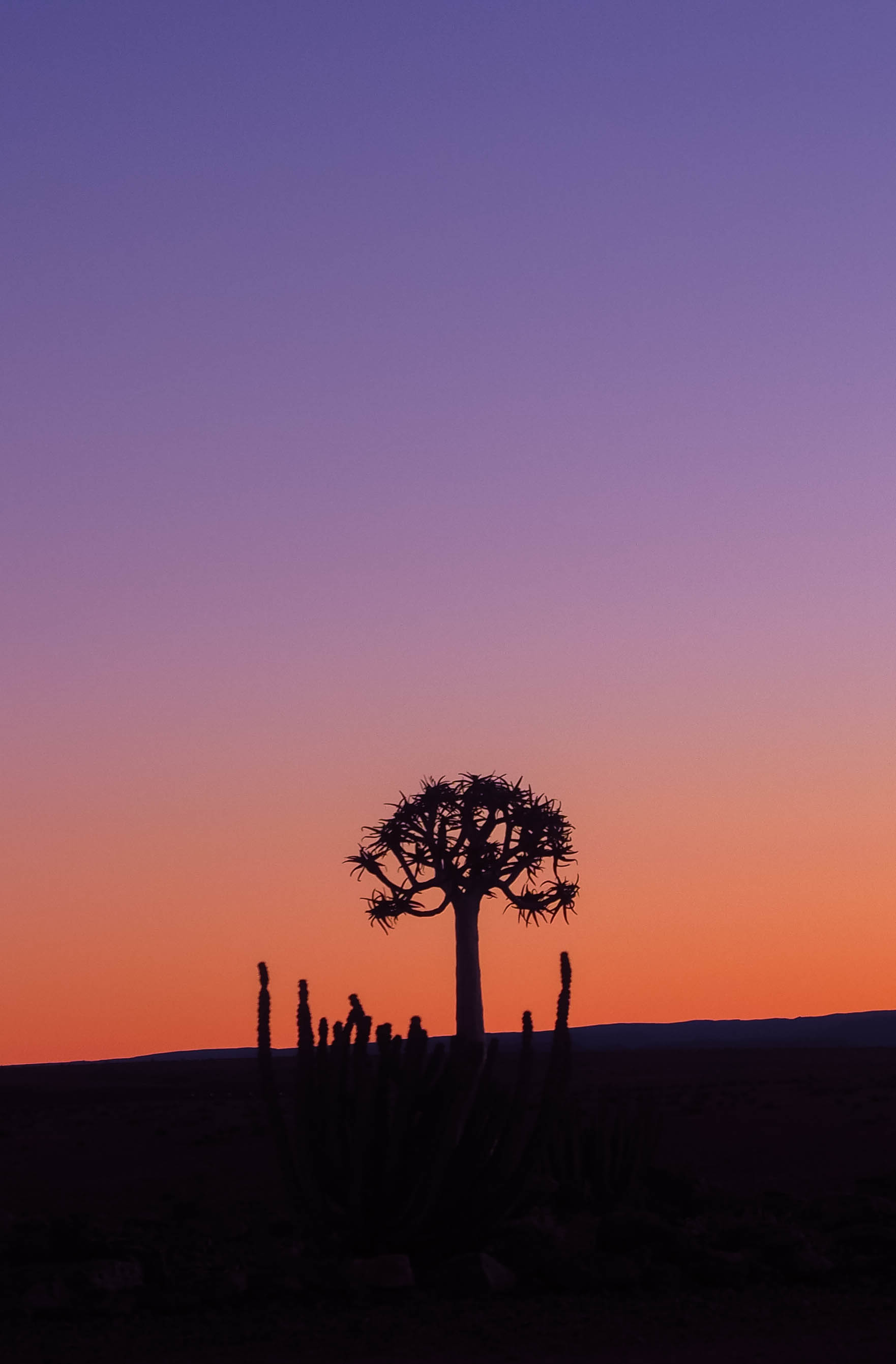
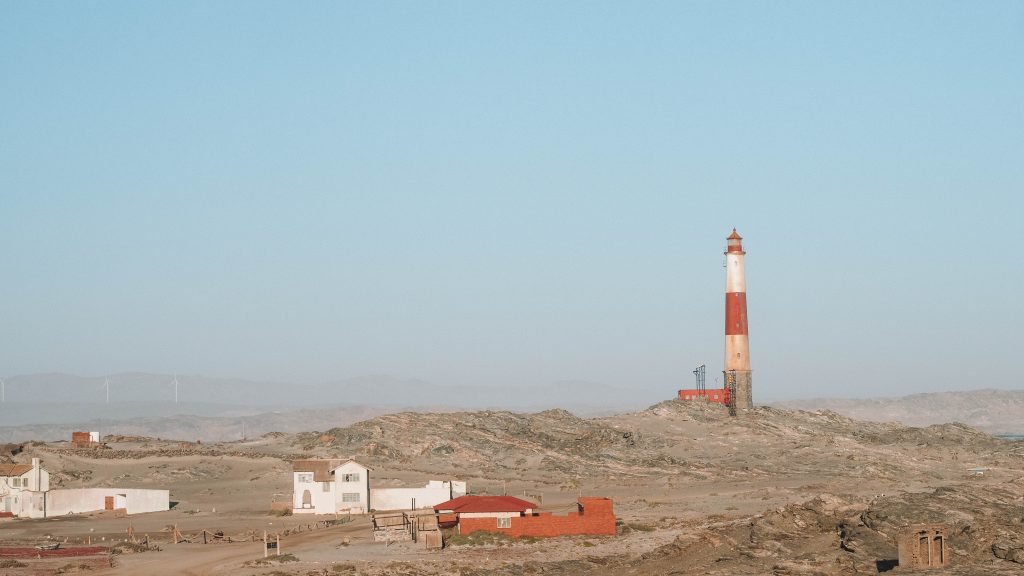
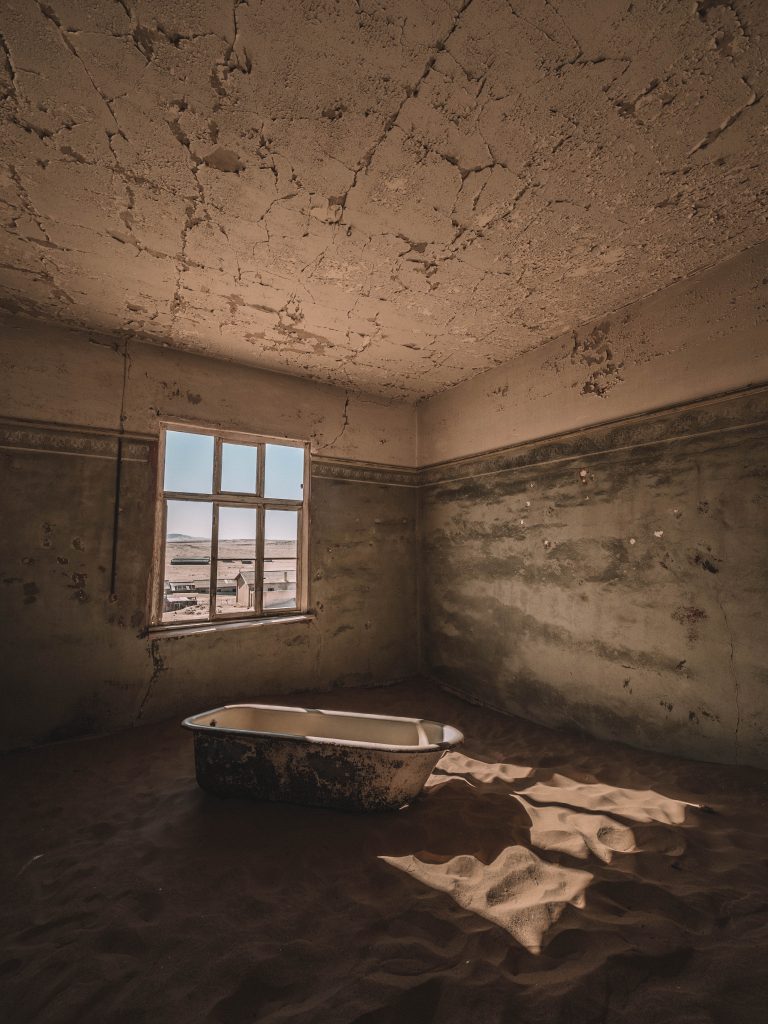
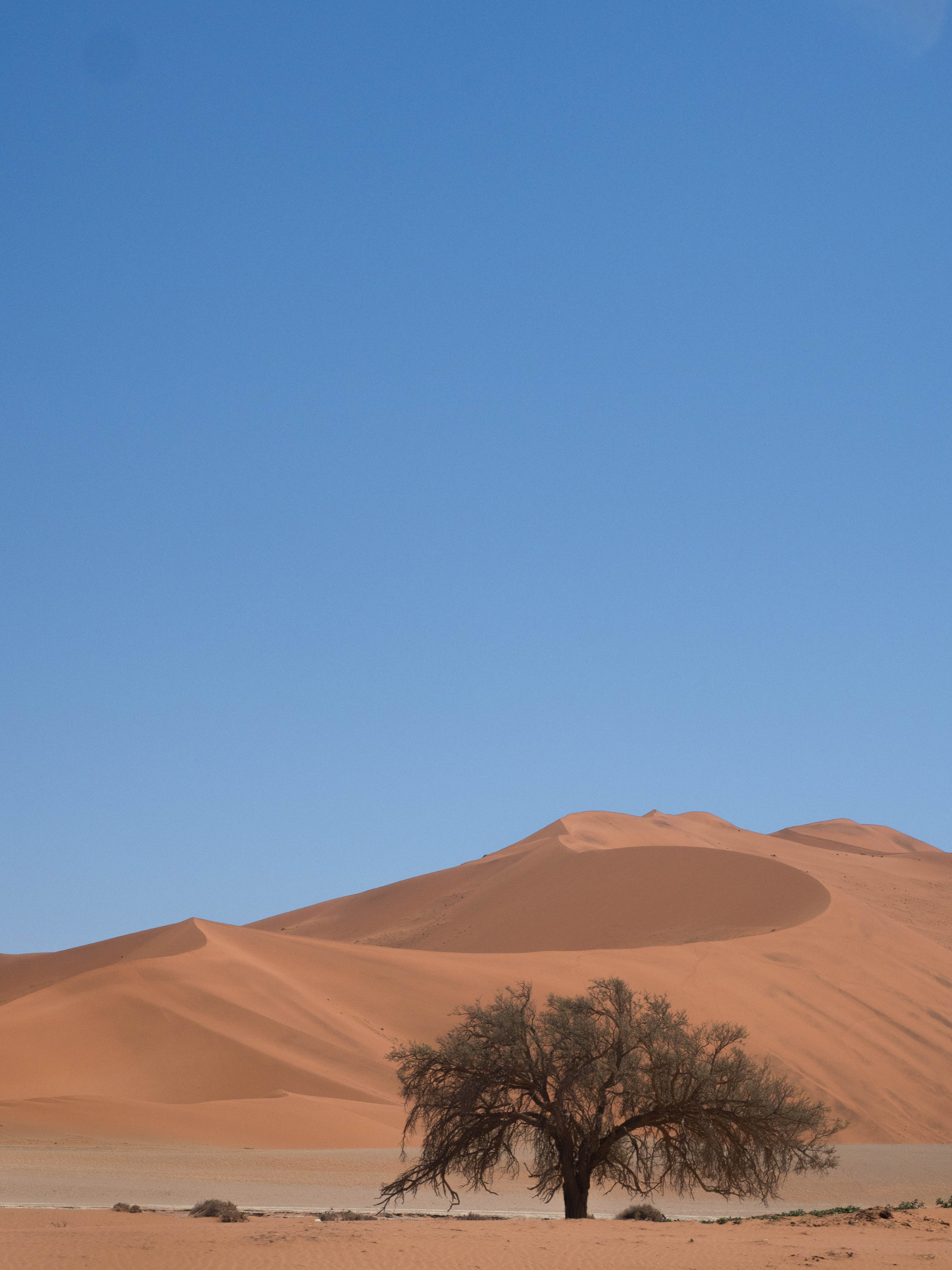
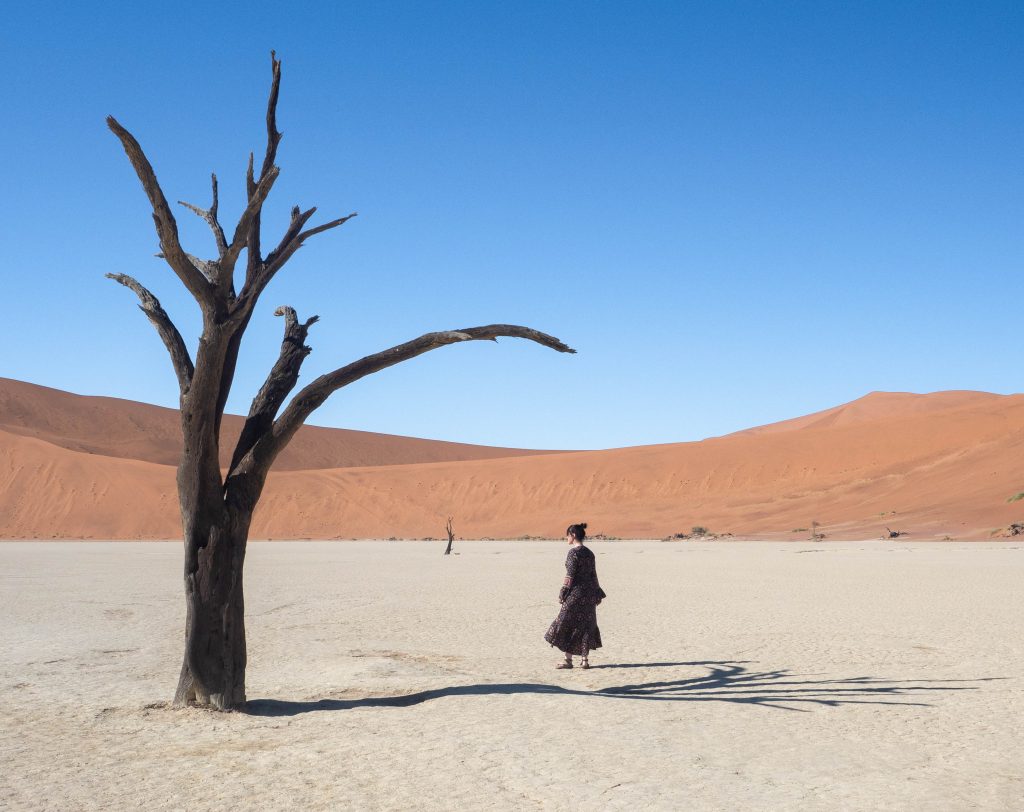
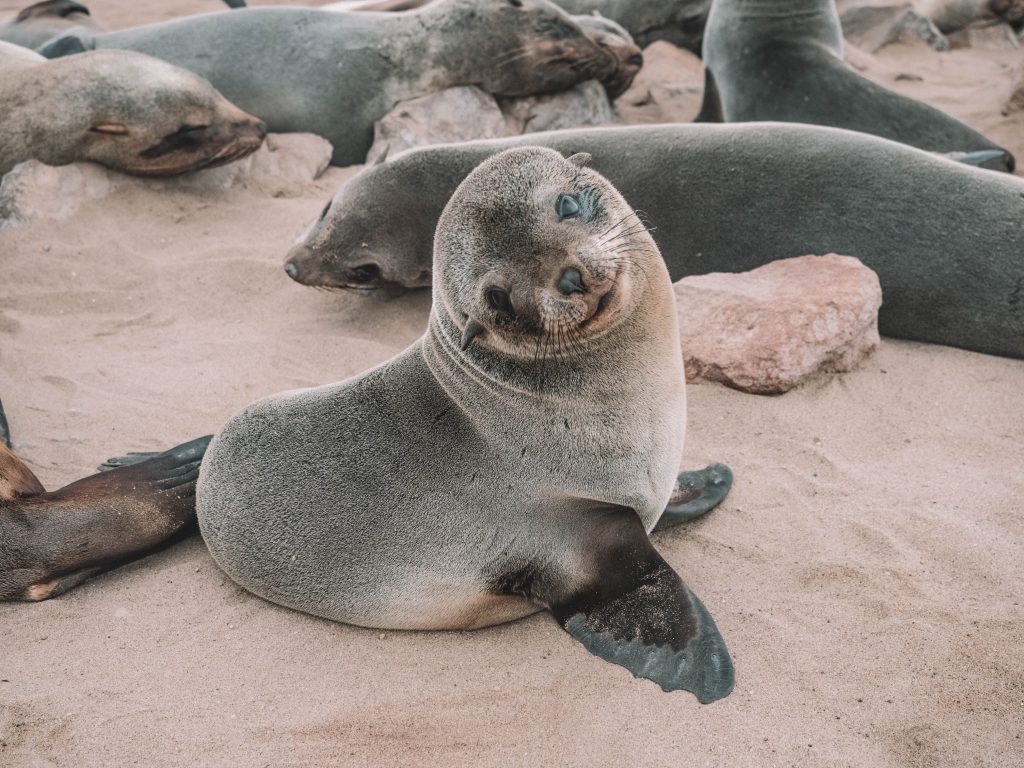
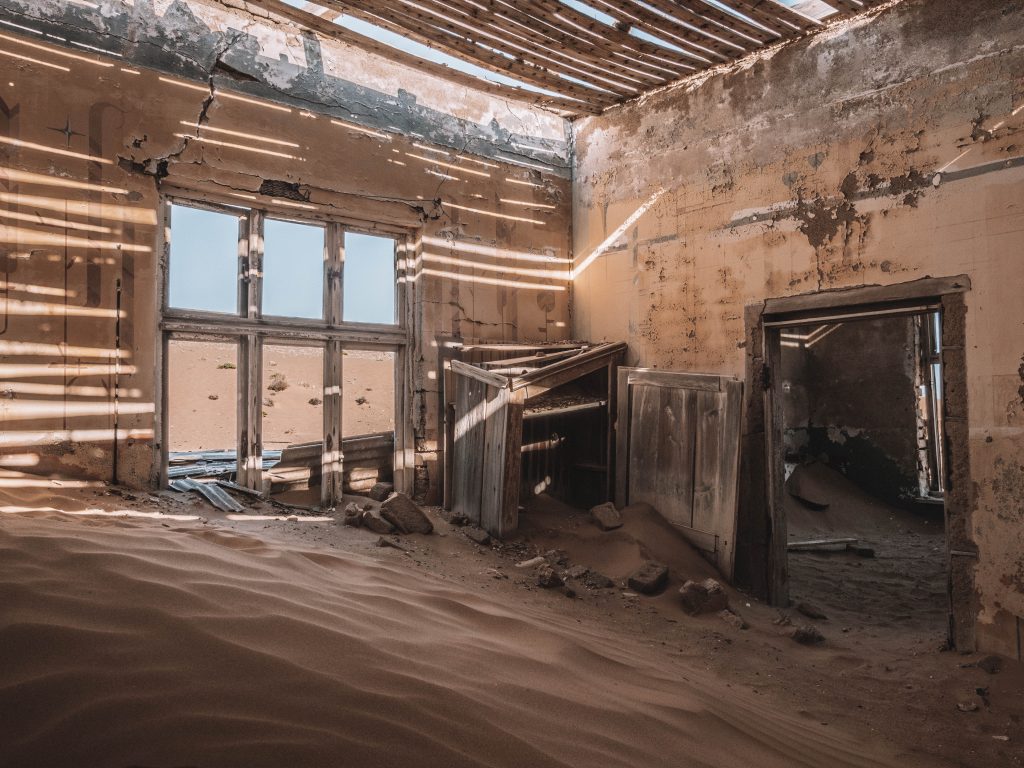
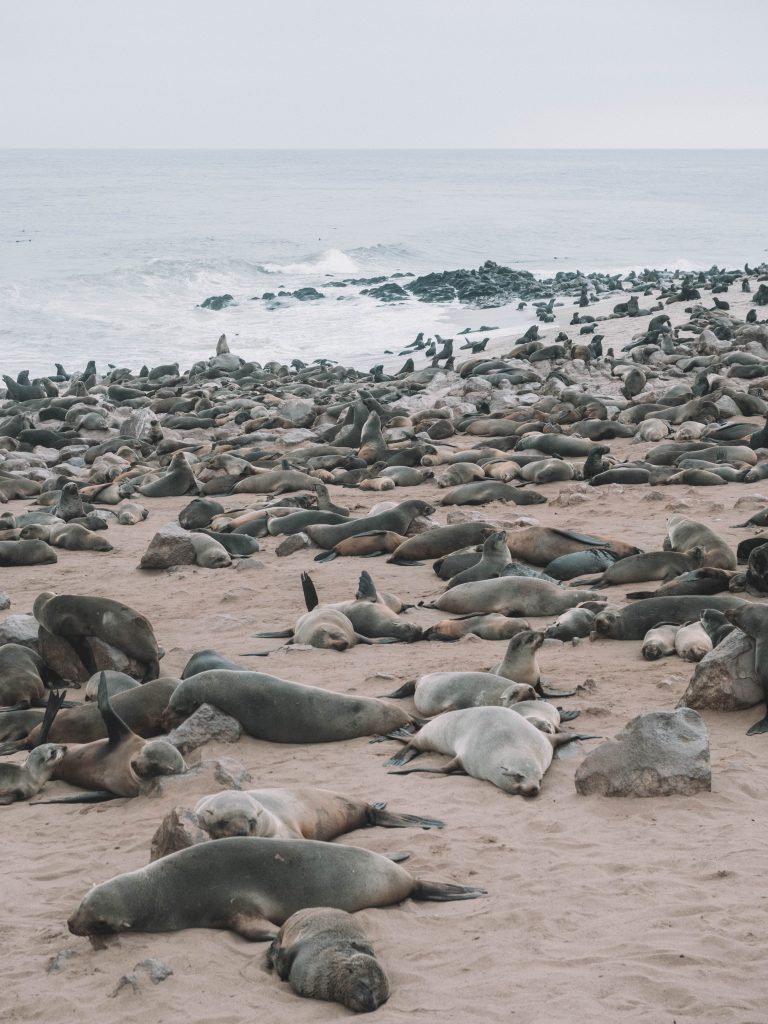
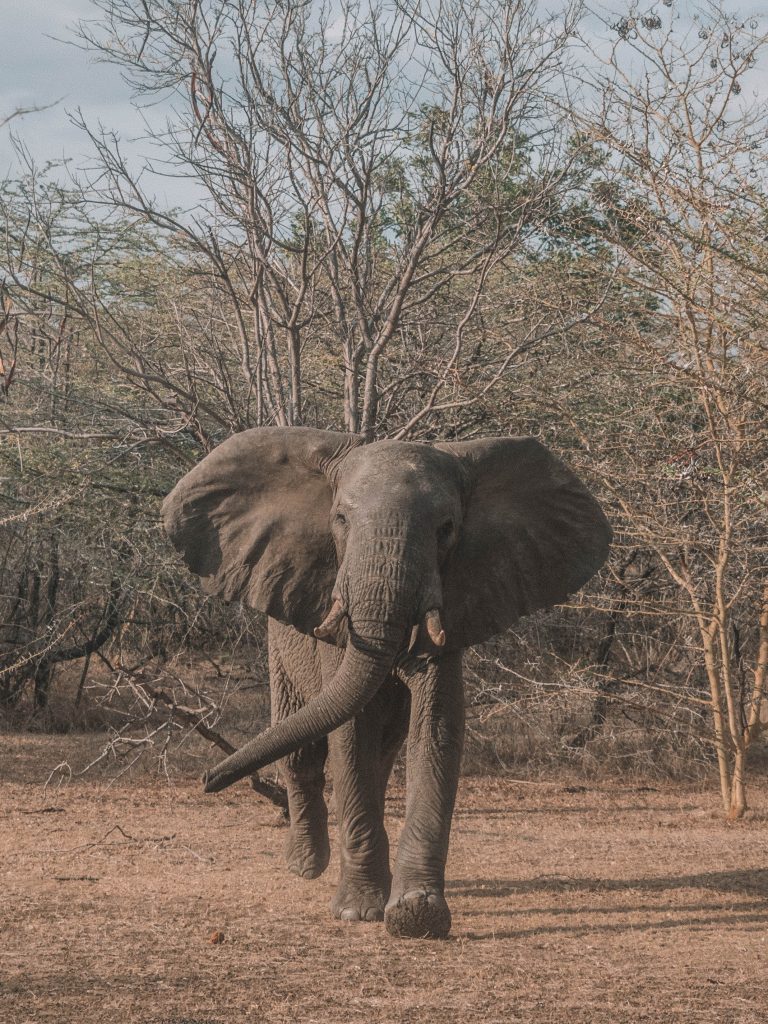

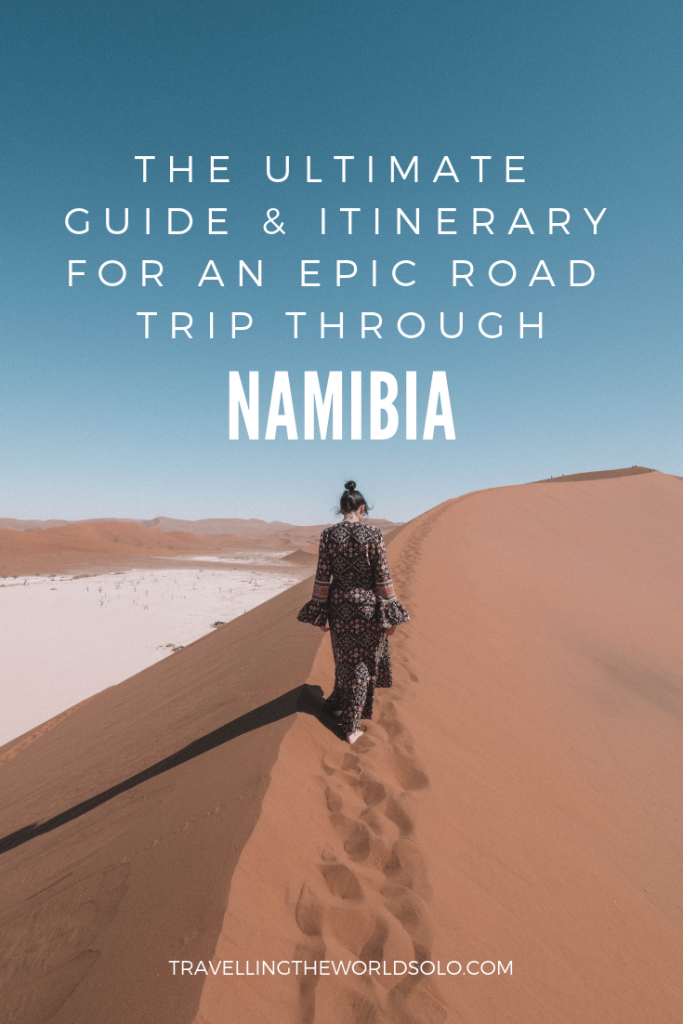

Such lovely scenery! Namibia is a bit too far away for me though. ❤️
I bet you could get to Cape Town in three flights or less! The world is your oyster John 🙂
Great post! My huband and I lived in Swapkomund for close to a year. When you work in an area, it is more difficult to see the country but we did make a few trips. We loved Sossusvlei!! I am glad that you recommended a 4×4 to rent for travel there. We actually visited Sossusvlei before we lived in Nambia and didn’t get the memo that we should rent a 4×4 to drive. We went in a car! Yikes! It took us FOREVER to get to the lodge. Safe travels! Wishing you joy, sparkles and many blessings!
What other trips did you take in Namibia that you’d recommend? And oh boy, I am not surprised it took you forever! The people we did see in smaller vehicles definitely looked like they were struggling :/ Safe travels to you too Sharalyn!
Lived there for 10 years in my youth so much more to see Iam 67 now and thinking of backing the country to revive my lovely memories
I’ve seen so many new things popping up around Namibia! I really gotta get over there!
Do it! It is still flying under the radar as a destination, so the sooner you go the better! 🙂
best of your blogs so far and they are all so amazing – incredible journey Ella.
Oh wow thank you so much Vicki! How are you? Got any trips planned?
Amazing photos and great tips!
Thank you so much! Hopefully they come in handy for other people planning a trip to Namibia 🙂
Definitely saving this one for the future! What an excellent and well put-together post.
Thanks Riley! Are you heading to the African continent any time soon?
I hope so! 😉
Such a great guide! I am thinking about travelling to Namibia and I will definitely save it for later. You have such a great pictures by the way, these building covered in the sand, that’s so impressive.
That is so great to hear! When are you thinking about going?
Your pictures are incredible! Like scenes out the new Blade Runner movie.
That is such a high compliment! Thank you <3
After travelling Europe in our camper for the last three years full time, this road trip seriously appeals to me. Wild camping options it sounds amazing and would never have thought about it as a route we could take, perhaps not in our van though!
Unless your van is a 4wd I don’t think it would be the best option! 🙂
Added to the bucket list! It looks amazing!
Awesome! Hopefully you get there one day very soon!
Wow, I love your photos. You’re at the bottom end of Africa while we are at the top, Morocco. I now want to explore more of this amazing country. I really enjoyed your blog, with the details and costings, thanks so much.
Oh Morocco, that’s a place I’d love to get to one day. Where are you headed next?
This si so useful, we’re hoping to go to Namibia in the next year or so, so I’m pinning this for future reference
How awesome Phoebe! I promise you that it will be an amazing adventure 🙂
Ive done a very similar tour and this post is absolutely spot on for anyone planning a trip to amazing Namibia. Well done!
That is awesome to hear! Did you visit any spots that aren’t on this itinerary?
wow. An amazing adventure. Namibia is high on my list and you made it even higher.
That is exactly what I like to hear! I love inspiring future adventures and travels 🙂
This is super helpful, as Sossusvlei is on my to-visit-someday list! One question… is English widely spoken? You didn’t mention any issues with communication at border crossings, the car rental place, etc. so I assume communication wasn’t an issue?
Yep, English is widely spoken, we never had an issue 🙂
Namibia is certainly deserving of at least a month’s time. I’m one of those “full of beans” types, who’d likely go in for an October jaunt, though in-season isn’t out of the question.
October would still be a nice time to go – I think January and February would be pretty unbearably hot though.
Thank you kindly, I really enjoyed reading your blog… I like the way you put in things like pictures,, travel tips, all places to visit and of course budget spent.
I will be visiting Namibian in October 2019 and have booked in a holiday flats at Henties Bay… It’s a self catering and am happy to have read that one can also stockstock up food before entering the border.
Thanks for all the helpful tips😊🙏